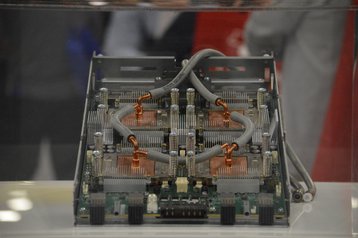Google’s chip development infrastructure team has moved its IT workloads to Google Cloud Platform.
The process was enabled by the company’s Alphabet Cloud, a team dedicated to internal IT migrations. Many other areas of Google have previously migrated some or all of their workloads to the cloud, including DeepMind, Vertex AI, YouTube, and Waze.
Moving workloads to the cloud has, according to the company, seen lead times to provision new compute infrastructure go from six months to a few days. Operational costs have also been reduced, meaning the team could "innovate faster because it was spending less time on data center maintenance."
The company also said: “Since moving to Google Cloud, the team increased daily job submissions by 170 percent over the past year while maintaining a flat scheduling latency. The workload is supported across 250+ GKE clusters spanning multiple Google Cloud regions.”
The chip development team was originally housed on a single rack of computers in a data center, but over time has significantly expanded as workloads grew more complex. They moved to a hybrid solution, using Google’s internal software design environment, and some Electronic Design Automation (EDA) workloads were sent to the cloud.
This hybrid approach had significant delays in transferring workloads for analysis and necessitated two desktops running simultaneously.
Google has made significant steps in the chip market in the last year. In February 2023, the company announced that it was readying two Arm CPUs for its cloud service, and in October 2022, the company released the E2000 chip in partnership with Intel. It has also developed the Argos video encoding semiconductor for YouTube.
But the company's biggest semiconductor success is found in its TPU chip family, used for AI workloads.

